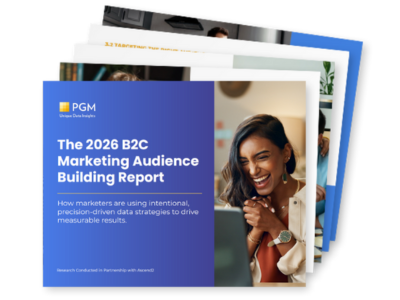The Great Cookie Farewell… Or Is It? What Happened?
For years, those tiny “cookies” stored in our browsers were the backbone of online advertising. They were like little digital breadcrumbs, letting marketers follow our journeys across different websites, piecing together our interests and preferences to serve up targeted ads.
But as we all became more aware of our digital footprints, and with growing concerns about how our personal information was being used, major web browsers started hitting the brakes. Apple’s Safari and Mozilla’s Firefox have been blocking third-party cookies by default for a while now.
And then there’s Google Chrome. After years of announcing and delaying a full phase-out of third-party cookies, Google has made a significant pivot in mid-2025. They have officially decided to not completely phase out third-party cookies from Chrome as previously planned.
Instead, Google will maintain its current approach, allowing users to manage third-party cookie choices within Chrome’s privacy and security settings. While Google continues to enhance tracking protections, particularly in Incognito mode which already blocks third-party cookies by default, the widely anticipated full deprecation has been put on hold. This decision comes after extensive engagement with the industry, regulators, and developers, acknowledging divergent perspectives on changes that could impact the availability of these cookies.
This doesn’t mean the push for privacy is over. Far from it. It means that while the old ways of gathering broad, often anonymous, user data across the web might not be completely gone just yet, the emphasis on user choice and alternative, more privacy-centric solutions remains.
Why Your Privacy is the New Gold Standard
It’s no secret: we’re all much more conscious about our online data now. We want to know who has our information, how they’re using it, and that it’s safe.
This growing awareness has led to powerful privacy laws like the GDPR in Europe and the CCPA in California, designed to give us more control over our personal data.
For businesses, this isn’t just about ticking boxes for compliance. It’s about building genuine trust. Brands that are transparent about their data practices, ask for our consent, and prioritize the security of our information are the ones that will win our loyalty.
Those that don’t? Well, they risk not just legal trouble, but also losing our trust and, ultimately, our business.
The Undeniable Power of First-Party Data (Now More Important Than Ever!)
So, if third-party cookies aren’t completely out, why is first-party data still a huge deal? Because even with Google’s latest decision, the underlying trend towards greater privacy and direct customer relationships is undeniable. First-party data remains the most reliable and future-proof asset for businesses. This is the information a brand gathers directly from you through your interactions with them. Think about it: when you sign up for a newsletter, make a purchase, or create an account, you’re willingly providing this data.
And because it comes directly from you, first-party data is incredibly accurate and reliable. It’s like getting information straight from the source, rather than through a game of telephone.
Here’s why it’s so powerful:
- Better Personalization: Imagine getting recommendations for products you actually love, or content that truly resonates with your interests. First-party data makes this hyper-personalization possible.
- Smarter Segmentation: Brands can group customers based on real interactions, leading to more effective and relevant marketing messages for different groups.
- Enhanced Trust: When you know a brand is using the information you’ve willingly shared to improve your experience, you’re more likely to trust them.
- Full Control: Brands own their first-party data, giving them complete control over its use and significantly reducing privacy risks, regardless of future cookie changes.
What Kind of First-Party Data Are We Talking About?
First-party data comes in many useful forms, all providing valuable insights for businesses to serve you better:
- Who You Are (Demographic Data): Basic info like age, gender, or location helps brands understand their audience at a high level.
- What You Do (Behavioral Data): This includes how you browse a website, which pages you visit, or what you click on. It helps brands understand your interests and how to improve your online journey.
- What You Buy (Transactional Data): Your purchase history, how often you buy, and what products you prefer. This is gold for recommending relevant items and even building loyalty programs.
- Where You Are (Location Data): Your general location or IP address can help brands offer localized content or deals – super helpful for brick-and-mortar stores!
- How You Interact (Interaction Data): Did you open that email? Did you click on a link in a message? This tells brands what communication methods work best for you.
- What You Ask For (Zero-Party Data – The Gold Standard!): This is where you explicitly tell a brand your preferences. Think about subscribing to specific newsletters or setting your communication preferences. It’s data you willingly give, often in exchange for a more tailored experience.
- Your Social Footprint (Social Media Engagement Data): How you interact with a brand’s social posts can reveal your sentiment and content preferences.
- Your Thoughts (Customer Feedback & Surveys): Directly asking for your opinion through surveys gives brands incredibly honest insights into what’s working and what’s not.
- App Habits (App Usage Data): If you use a brand’s app, how you navigate it, what features you use, and how long you spend on it are all valuable for improving the app experience.
- Support Stories (Customer Support Data): Your interactions with customer service can highlight common issues and help brands improve their support and products.
- Your Digital Identity (Website Registration Data): When you create an account, the information you provide helps personalize your user experience on their site.
- What You Love to Read/Watch (Content Engagement Data): Knowing which articles, videos, or infographics you spend time on helps brands create more of the content you truly enjoy.
The Golden Rule of First-Party Data: Transparency
Here’s the deal: we’re all much more likely to share our information when we understand why and how it’s being used. Brands need to be crystal clear and upfront about their data collection practices.
Think of it like this: if a brand offers you something valuable in return – like a discount for your email or personalized content that truly helps you – you’re more likely to share.
In fact, studies show that many of us are quite willing to share our email for a decent discount, and even our full name if the value proposition is clear. It’s all about a fair exchange.
The Road Ahead: Trust and Tailored Experiences
Google’s latest decision on third-party cookies in Chrome means the landscape is a bit less definitive than once expected, but one thing is clear: consumer privacy is no longer an afterthought; it’s the foundation. Being transparent about data, and intelligently using the first-party data we willingly share, businesses can continue to deliver experiences that feel personal, helpful, and genuinely engaging.





